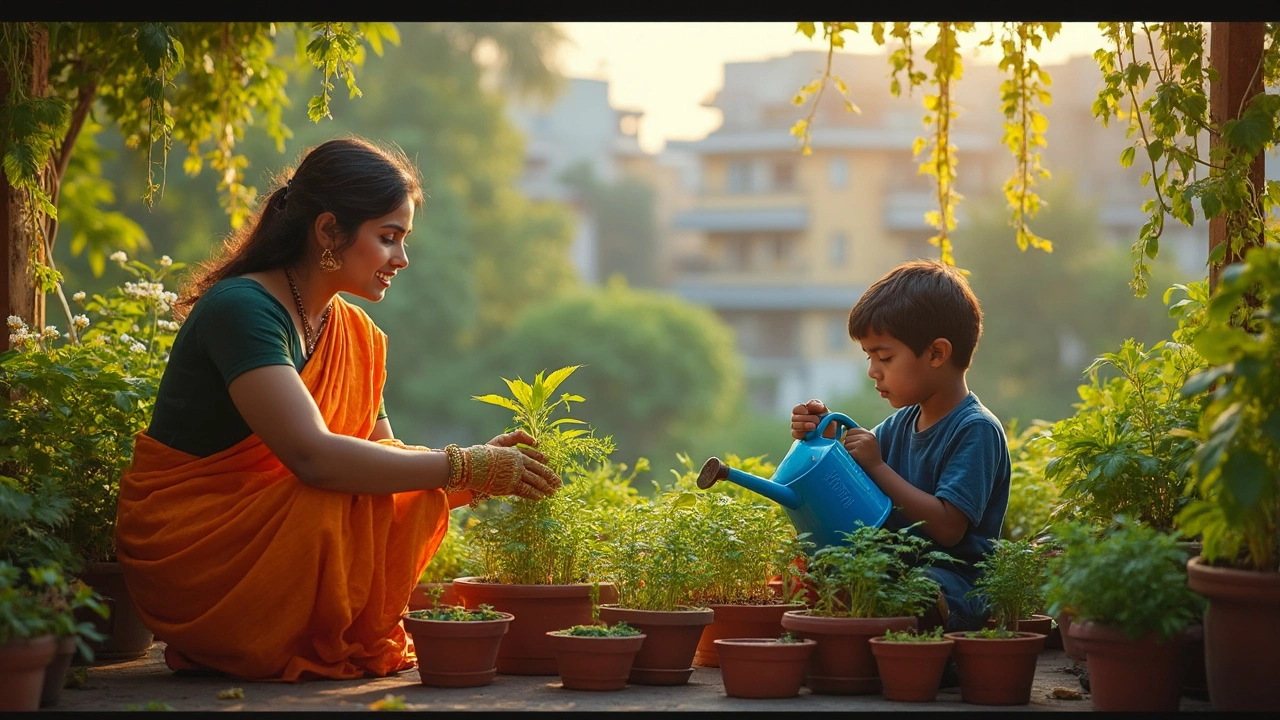This article breaks down the real work behind keeping a terrace garden healthy and good-looking. It covers cleaning, plant care, managing water and pests, and easy tricks to save your time. You’ll find practical tips to avoid common problems, plus simple checks to spot issues before they get bad. Whether your terrace is big or tiny, these steps will help you enjoy your space without endless chores. Regular maintenance is easier (and cheaper) than fixing a neglected mess.
Garden Care: Essential Tips for Healthy Plants and Strong Soil in India
When you think of garden care, the daily actions that keep plants alive and thriving, especially in India’s varied climate. Also known as plant maintenance, it’s not about fancy tools or perfect weather—it’s about understanding what your plants actually need right now. Whether you’re growing tomatoes on a balcony or trying to revive clay soil in your backyard, garden care starts with observation, not guesswork.
Good soil improvement, the process of making soil easier to work with and richer for plant roots. Also known as soil amendment, it’s one of the most overlooked parts of garden care. Dense, hard soil chokes roots and blocks water. Adding compost, leaf mold, or perlite can turn it into something plants love. You don’t need to buy expensive mixes—many Indian gardeners use kitchen waste, dried leaves, or even crushed rice husks. The key? Don’t just add stuff—add the right stuff for your soil type.
drip irrigation, a water-efficient system that delivers moisture directly to plant roots. Also known as drip system, it’s perfect for Indian summers where water is scarce and evaporation is high. But if your emitters clog or drip unevenly, your plants suffer. Most people blame the system, but the real issue is dirty water, poor maintenance, or wrong placement. Fixing this isn’t hard—you just need to flush lines, check pressure, and clean filters every few weeks.
And if you’re short on space, balcony gardening, growing plants in containers on balconies or terraces. Also known as small-space gardening, it’s one of the fastest-growing trends in Indian cities. You don’t need a yard to grow herbs, flowers, or even chillies. But direction matters—south-facing balconies get the most sun, while north-facing ones are better for shade lovers. Pick the right plants, use pots with drainage holes, and don’t overwater. Basil, marigolds, and cherry tomatoes do great here with minimal effort.
Then there’s composting, turning kitchen scraps into nutrient-rich soil. Also known as home composting, it’s the quiet hero of garden care. You don’t need a fancy bin. A bucket, some brown material like dry leaves, and a bit of green waste like vegetable peels will do. The trick? Balance. Too much green? It stinks. Too much brown? It won’t break down. Keep it moist, turn it once a week, and in a few months, you’ll have dark, crumbly soil that makes your plants grow faster.
Garden care isn’t about being perfect. It’s about showing up. It’s noticing when a zinnia gets eaten by rabbits, or when your drip line stops working, or when your soil feels like concrete. It’s about learning from small mistakes and fixing them before they become big problems. You don’t need years of experience—just curiosity and a willingness to try.
Below, you’ll find real fixes for real problems Indian gardeners face every day: how to pick plants that bloom all year, how to stop rabbits from munching your flowers, why rice can’t regrow on its own, and which balcony orientation gives you the most sunlight. No fluff. No theory. Just what works in India’s heat, monsoons, and small spaces.
